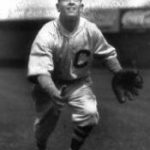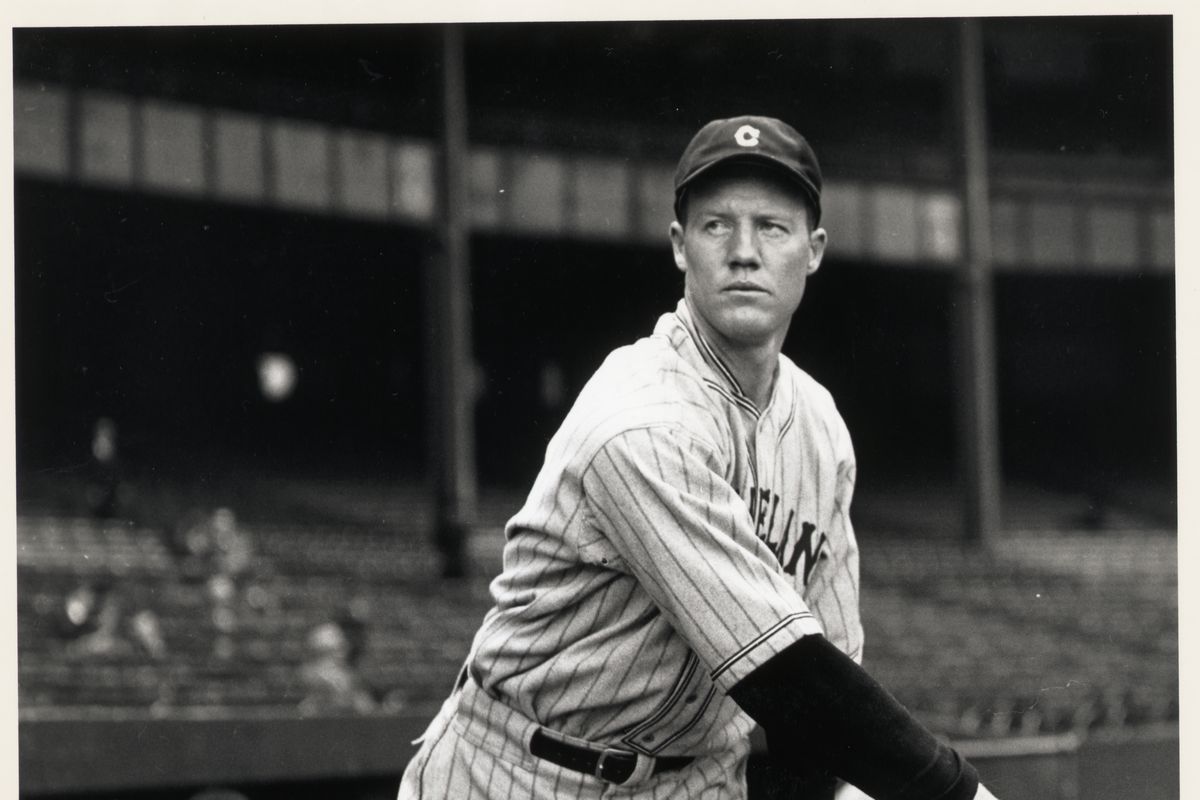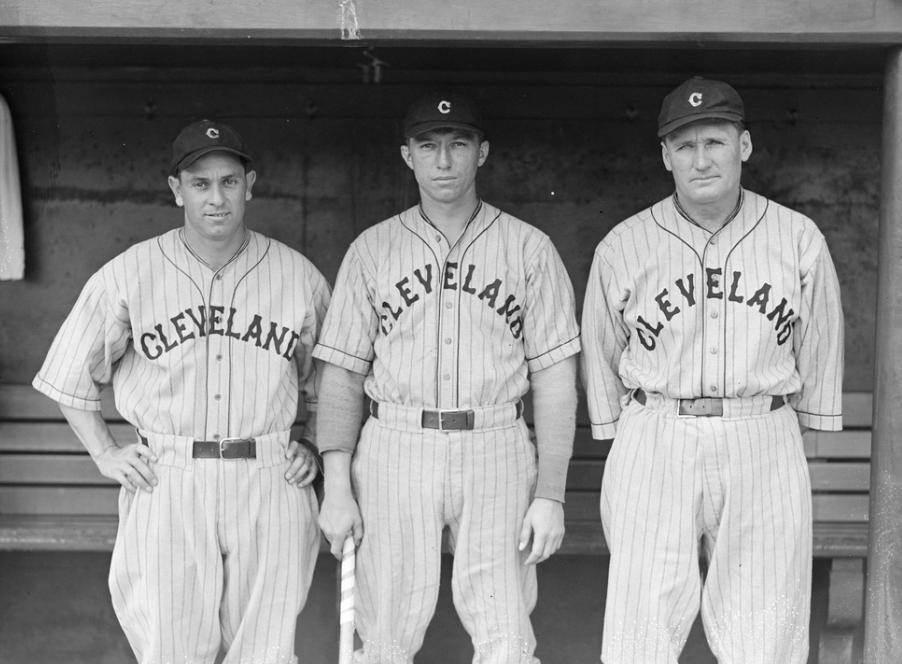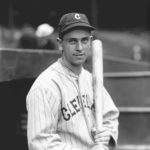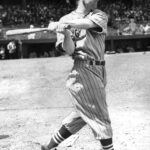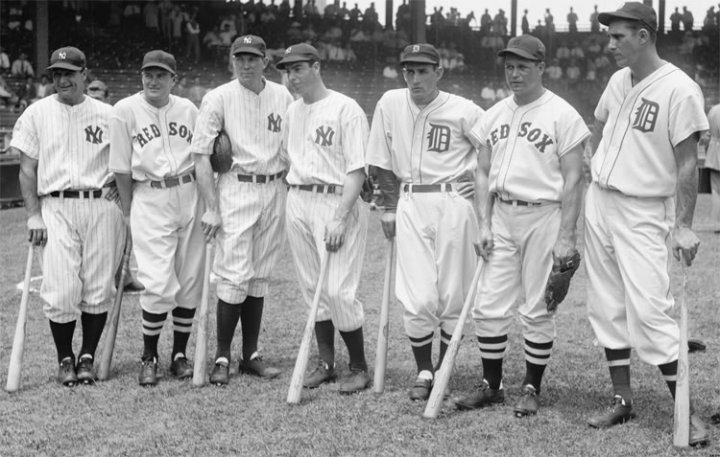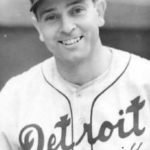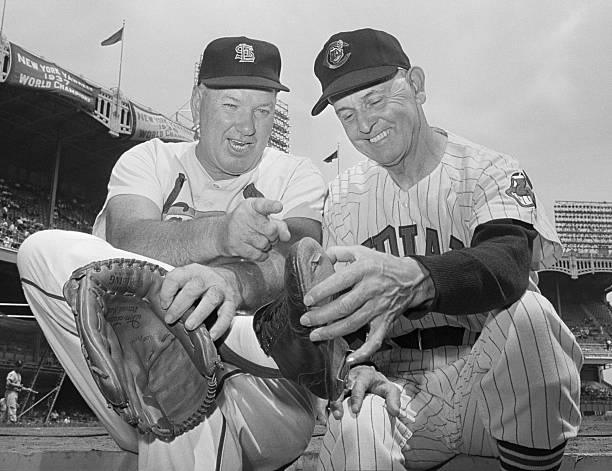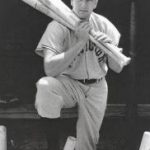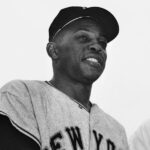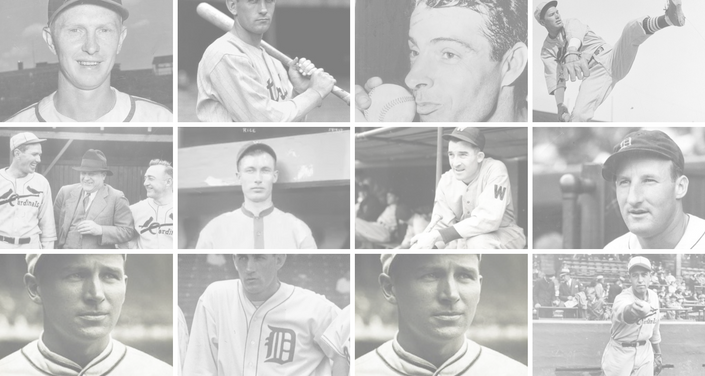Earl Averill
Position: Centerfielder
Bats: Left • Throws: Right
5-9, 172lb (175cm, 78kg)
Born: May 21, 1902 in Snohomish, WA
Died: August 16, 1983 in Everett, WA
Buried: Grand Army of the Republic Cemetery, Snohomish, WA
High School: Snohomish HS (Snohomish, WA)
Debut: April 16, 1929 (6,873rd in major league history)
vs. DET 4 AB, 1 H, 1 HR, 1 RBI, 0 SB
Last Game: April 25, 1941
vs. BRO 1 AB, 0 H, 0 HR, 0 RBI, 0 SB
Hall of Fame: Inducted as Player in 1975. (Voted by Veteran’s Committee)
View Earl Averill’s Page at the Baseball Hall of Fame (plaque, photos, videos).
Full Name: Howard Earl Averill
Nicknames: Rock or The Earl of Snohomish
Pronunciation: \A-ver-ull\
View Player Info from the B-R Bullpen
Relatives: Father of Earl Averill
Nine Players Who Debuted in 1929
Rick Ferrell
Doc Cramer
Earl Averill
Bobo Newsom
Larry French
Chief Hogsett
Dale Alexander
Lyn Lary
Eric McNair
The Earl Averill Teammate Team
C: Luke Sewell
1B: Hal Trosky
2B: Charlie Gehringer
3B: Odell Hale
SS: Joe Sewell
LF: Joe Vosmik
CF: Barney McCosky
RF: Bruce Campbell
SP: Bob Feller
SP: Mel Harder
SP: Wes Ferrell
SP: Schoolboy Rowe
RP: Monte Pearson
M: Walter Johnson
Notable Events and Chronology for EARL AVERILL Career
Biography
The Veterans Committee named outfielder Averill to the Hall of Fame 34 years after his final season. He is still the Indians’ all-time home run leader with 226 (thanks in part to the short fence in old League Park) and holds Cleveland career records in six offensive categories. His number 3 is one of only three retired by the Indians.
“The Earl of Snohomish” (his hometown) grew up in the state of Washington and played semi-pro ball before signing with San Francisco of the Pacific Coast League in 1926. After three .300 seasons in the PCL, including .354 with 36 home runs and 173 RBI in 1928, the 5’9″ 172-lb lefthanded hitter was purchased for a reported $50,000 by Cleveland. On Opening Day, 1929, he became the first AL player to homer in his initial big league at-bat. His 18 HRs (then a team record) and .331 BA in his rookie season helped establish him as one of the Indian’s most popular players. A graceful but unspectacular centerfielder, he led all AL outfielders that year with 388 putouts, but his arm, injured in high school, was not strong.
In 1930, Averill hit .339, and on September 17 walloped three home runs in the first game of a doubleheader and another in the second game to become the first ML player to hit four homers in a twin bill. His 11 RBI that day set an AL record. A dead pull hitter, he slammed 32 homers in both 1931 and ’32. He became one of the most feared hitters in the league; on August 29, 1932, Red Sox pitchers walked him five consecutive times. He had an off-year (.288) in 1935, largely because he burned his hand testing Fourth of July fireworks, but he bounced back in 1936 to lead the AL with 232 hits, and hit .378, second only to Luke Appling’s .388.
His line drive in the 1937 All-Star Game broke Dizzy Dean’s toe, an injury that indirectly ended Dean’s career. That same year, just before a June game, Averill suffered temporary paralysis in his legs. X-rays revealed a congenital spinal malformation which forced him to change his batting style. His BA and home run output slipped.
He was showered with gifts, including a new Cadillac, on “Earl Averill Day” in Cleveland in 1938. Cleveland fans were outraged the following June when he was traded to Detroit for marginal pitcher Harry Eisenstat and cash. Averill hit .280 in a part-time role for the 1940 pennant-winning Tigers. His son, Earl Douglas, played seven years in the majors
@ET-DC@eyJkeW5hbWljIjp0cnVlLCJjb250ZW50IjoicG9zdF90YWdzIiwic2V0dGluZ3MiOnsiYmVmb3JlIjoiTGVhcm4gTW9yZSBhYm91dCB0aGUgdGVhbXMsIHBsYXllcnMsIGJhbGwgcGFya3MgYW5kIGV2ZW50cyB0aGF0IGhhcHBlbmVkIG9uIHRoaXMgZGF0ZSBpbiBoaXN0b3J5IC0gLSAtIC0gLSAtIC0gIiwiYWZ0ZXIiOiIiLCJsaW5rX3RvX3Rlcm1fcGFnZSI6Im9uIiwic2VwYXJhdG9yIjoiIHwgIiwiY2F0ZWdvcnlfdHlwZSI6InBvc3RfdGFnIn19@
Factoids, Quotes, Milestones and Odd Facts
Played For
Cleveland Indians (1929-1939)
Detroit Tigers (1939-1940)
Boston Braves (1941)
Averill earned the nickname “Rock” due to his consistent play and solid physical build, and he was also at times known as “Popeye”, “Rockhead”, “Sloppy”, and “Elephant Ears.”
Similar: Chuck Klein statistically… Averill was a similar player skill-wise to Wally Berger. Among modern players, Kirby Puckett is close.
Linked: Dizzy Dean
Best Season, 1936
The stocky center fielder blasted his way to a third-place finish in American League MVP award voting, batting .378 with a league-best 232 hits and 15 triples. He hit 28 home runs, drove in 126, scored 136, and slugged .627. He also enjoyed a 20-game hitting streak.
Post-Season Appearances
1940 World Series
Factoid
Earl Averill hit the line-drive that struck Dizzy Dean on the foot and helped hasten the end of the pitcher’s stellar career. The play occurred in the 1937 All-Star Game.
Big League Debut: April 16, 1929
Had there been a more modern farm system in place, Averill would have been in the major leagues four or five years earlier than he was. As it was, he spent several years as a semi-pro player in Washington before three very successful seasons in the Pacific Coast League. When Cleveland purchased his contract for $50,000, Averill was nearly 27 years old. He homered in his first major league at-bat, on Opening Day 1929, and played until he was 39 years old.
Feats: On September 17, 1930, Averill belted three homers in one game… He hit for the cycle on August 17, 1933.
Notes
Averill retired as the Indians’ franchise leader in runs scored, triples, home runs, RBI, total bases, extra-base hits and slugging. Entering 2004 he still led in runs (1,154), triples (121), RBI (at 1,084 he’s the only Indian ever to reach 1,000), total bases (still almost 900 ahead of Jim Thome), and extra-base hits (724). Averill’s homer mark was passed by Albert Belle (242), Manny Ramirez (236) and finally Thome. Hal Trosky (.551), Belle (.580), Ramirez (.592), and Thome have each surpassed Averill’s .542 career slugging percentage as an Indian.
Hitting Streaks
20 games (1936)
20 games (1936)
Transactions
June 14, 1939: Traded by the Cleveland Indians to the Detroit Tigers for Harry Eisenstat and cash.
This was an extremely unpopular move in Cleveland.
All-Star Selections
1933 AL
1934 AL
1935 AL
1936 AL
1937 AL
1938 AL
Replaced
Homer Summa
Replaced By
The Indians dealt Averill to Detroit in June of 1939 because they had Ben Chapman to play in his outfield spot. They had acquired Chapman in a trade from the Red Sox in December, 1938.
Best Strength as a Player
Extra-base and home run power.
Largest Weakness as a Player
Averill was (at least on one occasion) accused of being nonchalant. The Sporting News, discussing his hot start in 1938, noted that the 35-year old Averill was playing with newfound spirit. “Always a competent workman, Averill nevertheless has shown a lack of aggressiveness in past campaigns that caused him to be marked as a somehwat colorless performer,” TSN wrote on June 2, 1938. “His old, lethargic attitude is gone,” TSN continued, and Averill “has become a No. 1 hustler.” Reports speculated that Averill was spurred by manager Ossie Vitt’s approach and the competition from fellow outfielders Jeff Heath and Roy Weatherly.


